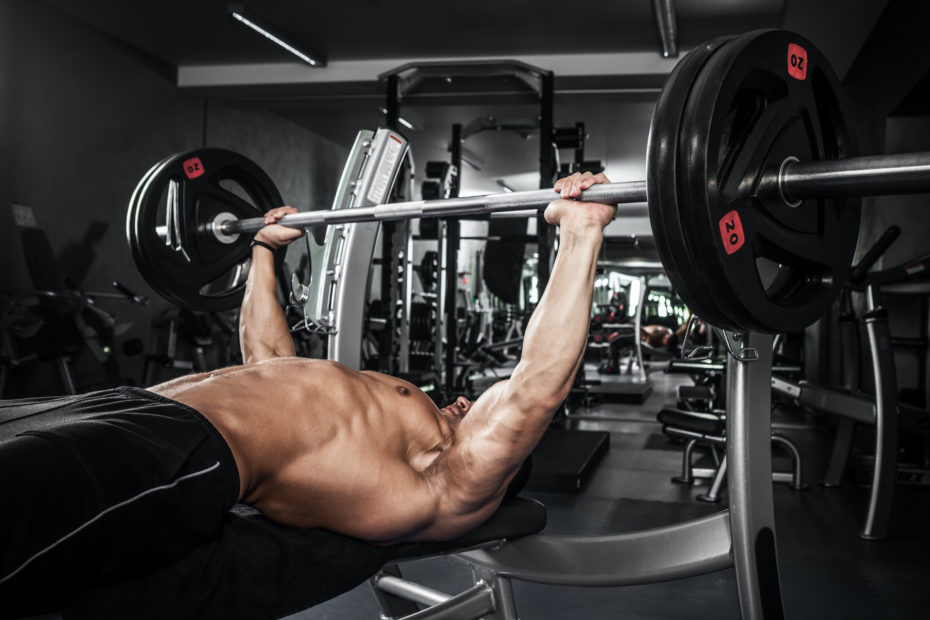You don’t need to be spending hours warming up before your heavy bench press workouts. But, that also doesn’t mean you should ignore that your shoulders are in need of some preparation. Spending just a few minutes doing what’s needed will guarantee press-ready shoulders and a more effective workout. Quit the half-assed shoulder circles and flimsy band exercises! Grab a kettlebell, turn it upside down, and do a kettlebell press instead.
The Bottoms-Up Kettlebell Press
One of the powerful benefits of doing the bottoms-up press (BUP) is that it teaches you the principle of irradiation. By gripping the kettlebell hard to stabilize the bottoms-up position, the rest of your arm needs to work hard as well. This increased tension in your entire arm irradiates to create more stability in your shoulder. It’s not hard to imagine how more shoulders stability will result in a stronger and safer bench press. Here’s how to perform the basic seated version:
A half-kneeling position also works particularly well as it helps open-up your hips and get some simultaneous lower body activation. Using two kettlebells at the same time to work bilaterally is also an option. Although, findings from the field of neurophysiology show unilateral exercises where you’re working one arm at a time to favor increased high-threshold motor unit activation. Overall you’ll want to train with a mix of unilateral and bilateral exercises, but starting out your pressing workouts with a unilateral bottoms-up press will benefit you the most.
The overhead position provides a challenge to your core when your seated upright or kneeling. Like your tense arm promoting shoulder stability, the irradiation principle and your strongly braced core will enhance the stability of your entire torso and connecting arms.
Vertical v.s. horizontal bottoms-up kettlebell press
If you think a vertical BUP will only prepare your shoulders for overhead pressing then you’d be wrong (although it’ll help with that too!). While it’s true that the BUP helps you find the right groove for pressing overhead, what’s going on inside your shoulder is what counts and why they have a significant transfer to any and all pressing movements. This includes all dumbbell, barbell, overhead and bench press variations. That being said you may wish to use more vertical BUP’s at the start of your shoulder-focused workouts, and then more horizontal BUP’s at the start of your chest-focused workouts. The bottoms-up bench press using a flat bench is a good example:
The advantages to pressing like this is that you might feel better prepared to chest press afterward, since muscular recruitment patterns will correlate well, and you’ll have had a chance to familiarize yourself with a more similar pressing angle. For example these are more similar to a barbell bench press and therefore you might prefer warming-up with them.
That being said with overhead variations there’s more being asked of your shoulder stabilizers and hence you’d benefit more in that department. To see what angle works best for you then you can give both vertical and horizontal versions a try and see how your heavier exercises feel afterwards.
Using the Bottoms-Up Press to Monitor Fatigue
After a short period of consistent use then your ability to perform a BUP can be a good indicator of your overall readiness to train and ability to lift heavy on any given day. If you’re as loose as a noodle when performing the BUP then it might not be a good day to attempt some personal bests with your heavy presses. You might be under-recovered or overtrained.
Briefly, signs of overtraining can differ depending on whether you’re overtraining via volume or overtraining via intensity. One will bring about signs and symptoms that are associated with central nervous system fatigue, whilst the other more muscular fatigue. One will cause you to lose your appetite and have trouble sleeping, whilst the other will cause you to eat and sleep at every opportunity. This is one of the reasons why overtraining is hard to monitor.
Using a BUP consistently and at the start of your workouts can be a useful and practical tool for monitoring signs of central nervous system overtraining, typically as a result of intensity. In other words you’ve likely been pushing the weights a bit too hard recently.
After regular use of the same style of BUP then a sudden and continued reduction in your ability to do them might be an early warning sign that you need to schedule a lighter training week sometime soon.
Identify Asymmetries
You can also use BUP’s to monitor strength asymmetries. If you’re seeing a left-to-right difference in strength or control, then you’ve got something you need to work on. Performing an extra few sets on the weaker side is a good place to start, and will help you even things out over time. Another strategy is to use more heavy unilateral exercises during the main part of your workout rather than relying solely on bilateral exercises where one arm can always compensate for the other. Single-arm dumbbell presses may not seem as “hardcore” as a barbell bench press, but there’s no hiding if one side’s weaker than the other.
Programming
No hassle, no more dodgy shoulders, and no more attempting personal bests on days when the body’s just not ready for it. The Kettlebell Bottoms-Up press can be a massively useful tool in your training arsenal. A few sets of 8-15 reps at the start of your workout will set you up for pressing success and help bulletproof your shoulders for the future.
World-class coaching to look great naked! CLICK HERE to find out more.

I build Olympians, Cover Models and those who want to look like them. Author or “Ultimate Abs” available in all good book stores.
